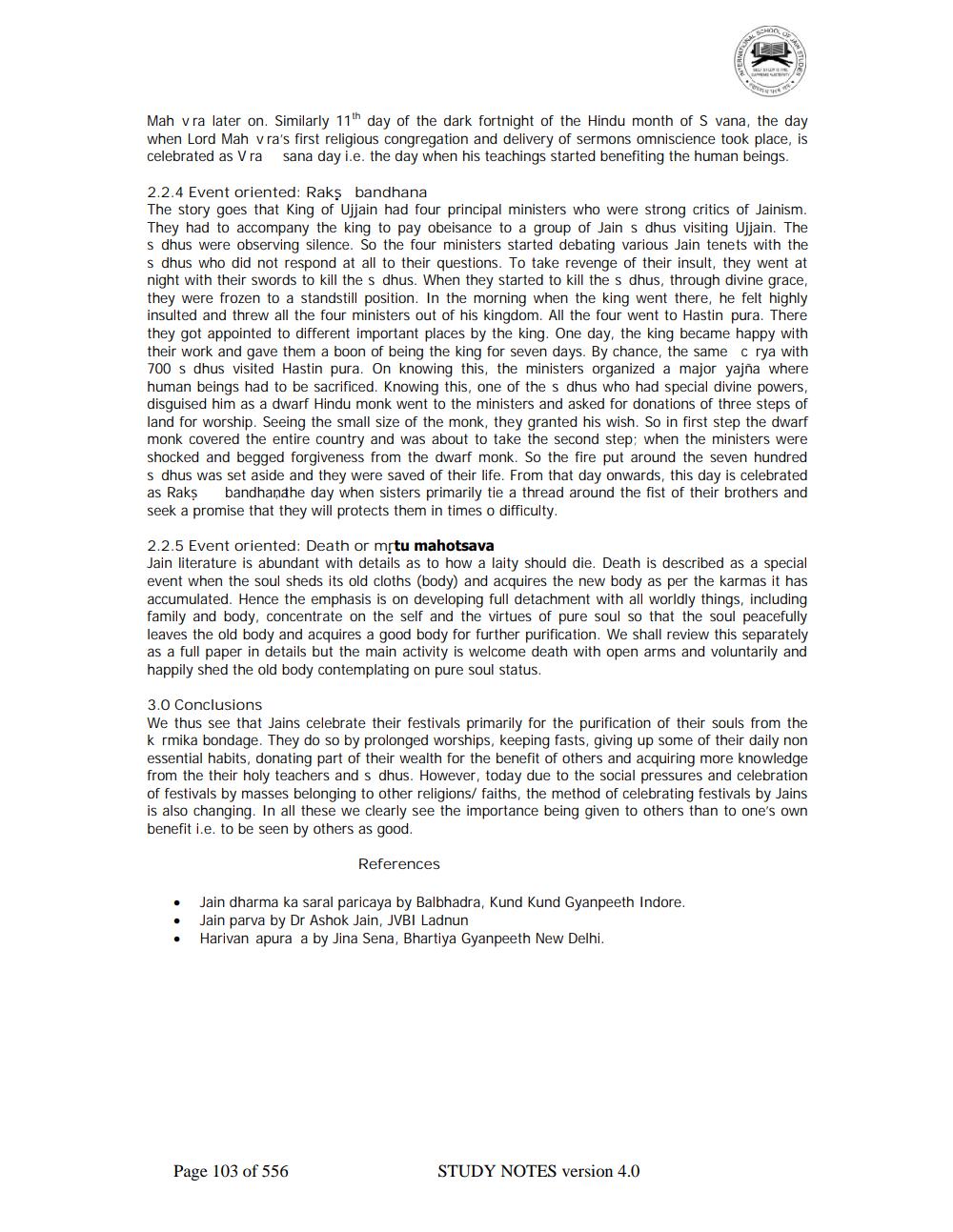________________
Mah vra later on. Similarly 11th day of the dark fortnight of the Hindu month of S vana, the day when Lord Mah v ra's first religious congregation and delivery of sermons omniscience took place, is celebrated as Vra sana day i.e. the day when his teachings started benefiting the human beings.
2.2.4 Event oriented: Raks bandhana The story goes that King of Ujjain had four principal ministers who were strong critics of Jainism. They had to accompany the king to pay obeisance to a group of Jain s dhus visiting Ujjain. The s dhus were observing silence. So the four ministers started debating various Jain tenets with the s dhus who did not respond at all to their questions. To take revenge of their insult, they went at night with their swords to kill the s dhus. When they started to kill the s dhus, through divine grace, they were frozen to a standstill position. In the morning when the king went there, he felt highly insulted and threw all the four ministers out of his kingdom. All the four went to Hastin pura. There they got appointed to different important places by the king. One day, the king became happy with their work and gave them a boon of being the king for seven days. By chance, the same crya with 700 s dhus visited Hastin pura. On knowing this, the ministers organized a major yajña where human beings had to be sacrificed. Knowing this, one of the s dhus who had special divine powers, disguised him as a dwarf Hindu monk went to the ministers and asked for donations of three steps of land for worship. Seeing the small size of the monk, they granted his wish. So in first step the dwarf monk covered the entire country and was about to take the second step: when the ministers were shocked and begged forgiveness from the dwarf monk. So the fire put around the seven hundred s dhus was set aside and they were saved of their life. From that day onwards, this day is celebrated as Raks bandhanahe day when sisters primarily tie a thread around the fist of their brothers and seek a promise that they will protects them in times o difficulty.
2.2.5 Event oriented: Death or mtu mahotsava Jain literature is abundant with details as to how a laity should die. Death is described as a special event when the soul sheds its old cloths (body) and acquires the new body as per the karmas it has accumulated. Hence the emphasis is on developing full detachment with all worldly things, including family and body, concentrate on the self and the virtues of pure soul so that the soul peacefully leaves the old body and acquires a good body for further purification. We shall review this separately as a full paper in details but the main activity is welcome death with open arms and voluntarily and happily shed the old body contemplating on pure soul status.
3.0 Conclusions We thus see that Jains celebrate their festivals primarily for the purification of their souls from the k rmika bondage. They do so by prolonged worships, keeping fasts, giving up some of their daily non essential habits, donating part of their wealth for the benefit of others and acquiring more knowledge from the their holy teachers and s dhus. However, today due to the social pressures and celebration of festivals by masses belonging to other religions/ faiths, the method of celebrating festivals by Jains is also changing. In all these we clearly see the importance being given to others than to one's own benefit i.e. to be seen by others as good.
References
Jain dharma ka saral paricaya by Balbhadra, Kund Kund Gyanpeeth Indore. Jain parva by Dr Ashok Jain, JVBI Ladnun Harivan apura a by Jina Sena, Bhartiya Gyanpeeth New Delhi.
Page 103 of 556
STUDY NOTES version 4.0




